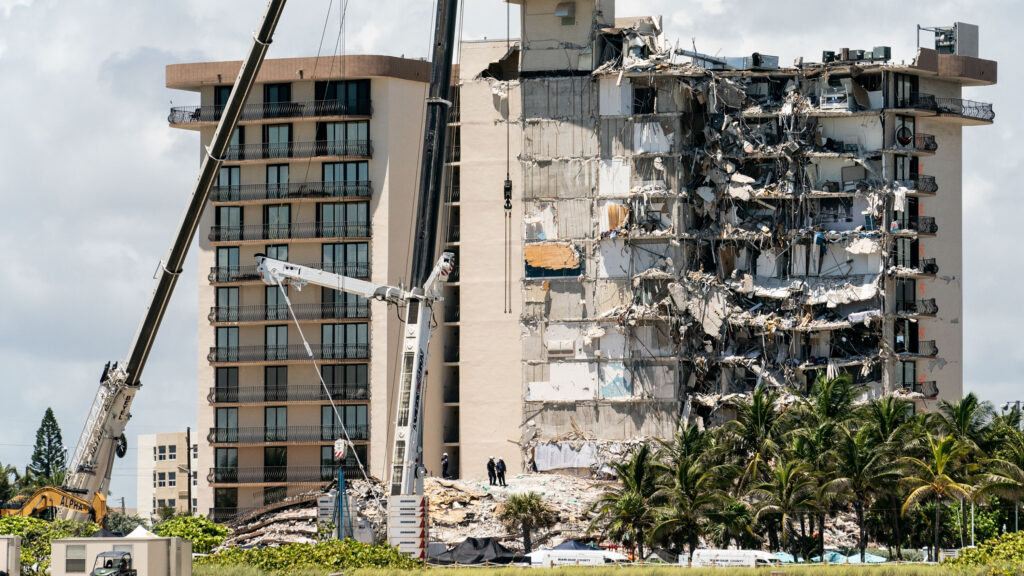Florida building collapse – a warning to community schemes

Image credit: New York Times
When a twelve-storey tower partially collapsed in Surfside, Florida, community schemes throughout the world took note.
Shoddy building works, poor municipal supervision, insufficient maintenance, serious storms and the board’s refusal to raise special levies to fund repairs did not just result in arguments and legal action—these conditions cost lives. 36 people died and 109 other residents were still unaccounted for some time after the collapse.
The collapse was sudden and deadly—but it was foreseeable. As police and firemen worked to save lives, they also collected the evidence that will be used to hold people accountable for the damages and losses. In 2019, five members of the scheme’s board resigned, as previous scheme executives had done, because they could not do the repairs they knew were necessary.
The board was advised that the scheme needed to spend $15 million on repairs, but some board members blocked the decision to raise the funds and they now stand accused of spreading misinformation.
The building has now been flattened, legal actions have been started against the scheme and the court has put it into liquidation. Board members, in their personal capacities, can expect to be held accountable for their failure to exercise their fiduciary duties. Other potential targets for damages claims in similar South African circumstances would be the developer and building contractors—if they still existed and were solvent—and the schemes’ managing agents, if they had failed to encourage the scheme to comply with the law.
South African sectional title schemes have a legal obligation to prepare a “maintenance, repair and replacement plan”, which must be used to determine its reserve fund contributions. This is designed to ensure reasonable standards of building maintenance so as to avoid both special levies and fatal building collapses.
Trustees have a duty to ensure proper maintenance of the common property—which includes structural support elements—and to ensure that sufficient funds are available to do so. That means a properly calculated MRR Plan and an adequate reserve fund—which must be spent to keep the key infrastructural elements in good condition. When trustees receive an expert report warning of imminent danger, they MUST take immediate action to address the danger, and if the reserve fund is inadequate, to levy special contributions.
Article reference: Paddocks Press: Volume 16, Issue 7.


Sorry, the comment form is closed at this time.